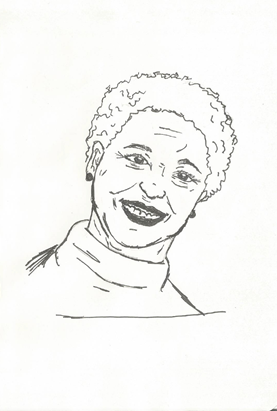by Rosamaria Carneiro
Translated by Claudia Pires Reviewed by Matheus Lucas Hebling
Originally published in Portuguese April 28, 2020 link

On 5 April 2020, the risk group guidelines for COVID-19 underwent the first change in Brazil. Among the people at greatest risk of contagion would also be high risk pregnant and puerperal women: pregnant women with diabetes, hypertension, and chronic diseases – because of their commodities – and women who have recently given birth. At the end of the same week, the Ministry of Health (Brazil) changed again the guidelines and included all pregnant women as a risk group, as well as women who had an abortion recently.
This change sparked many heated debates in the field of female reproductive life in Brazil. Among the debates, the topic “the best place to give birth” came up. Home-birth, which in Brazil is highly criticized by the most conservative and the adepts of the conventional medicine (bio-medicine), suddenly began to be considered as a recommended model, given the low exposure of mother and baby. The house is now recognized as a safe environment for delivery and birth. We will have to wait and see what the outcome of this recommendation in the future. Nonetheless, at least for the moment, it puts in a hard spot the idea that the hospital is the space of excellence per se and a “natural place” of delivery, as the French, Dutch and English models have been announcing for many decades, in which the midwives go to the homes of the parturients.
However, this choice has in Brazil an intense cutting out of race/color, and it is still far from being a reality for most people who are about to give birth. Home-birth is linked to the cost of the team that supports the women in labor, and therefore accessible only to the middle and upper class of our society¹.
Another issue raised by the change of the protocol concerns about the right of parturients who will give birth in hospitals to have a companion during delivery and birth. Given the significant threat of transmission and the necessity of minimizing the number of people circulating on the delivery scene, especially in hospital environments, where the sick (people) are, women of different social classes and race/color, who cannot or do not want to give birth at home, have seen themselves alone – or afraid of being alone – when giving birth; a moment full of insecurities, pain and also violence. In Brazil, more recently known as obstetric violence². Activists in the field of sexual and reproductive rights, including doctors, nurses, and feminists, began to produce, almost incessantly, material about the rights of pregnant women and puerperal women in times of COVID-19. Material, however, more written and spoken on social media, Instagram, and Facebook, since there are few and still inexpressive papers and scientific research undertaken in this field. Despite the importance of this action, but the question remains as to whether this material reached – and how – to pregnant women from the periphery, popular strata, countryside, villages, and riverside populations. In the same way, how and if this has reached health professionals who, in the name of the risk of contagion, could quickly isolate a parturient woman, denying her a companion, or indicating an unnecessary cesarean section, to anticipate delivery and thus protect the mother-baby from COVID-19?
However, for us Social Scientists did not cause any astonishment or surprise that pregnant women have become the focus of greater attention in this context, considering the historic intersection between State policies, reproduction, economy, and national contours, announced in concepts such as “biopolitics”³.
or the bodies of the nation, among many others. In many ways, the pregnant women’s bodies have never been theirs alone, but they also belonged to the state 4. Hence the inclusion of pregnant and puerperal women in risk groups is already a tragedy foretold or a safeguard envisaged.
Nevertheless, due to the anthropological vocation of thinking from the small or the microscopic (in this case, human), it seems interesting to reflect on the ambivalence of this inclusion. Gestation and parturition, have always orbited risk and danger, so much so that medicine classifies them as low, eventual, or high risk. There is also what Diniz5 denounces to be sexual and reproductive pessimism concerning women’s bodies. If, on one hand, the attitude of including pregnant women in risk groups can represent protection, on the other hand, this may also mean the violation of pregnant women rights, such as the presence of a companion during labor and childbirth; to have access to a timely, dignified and respectful birth; to have access to a legal abortion procedure; to have access to contraception and quality prenatal care.
The media has recently reported that prenatal consultations have been started to happen online or by phone and that women have faced resistance to placing IUDs in the health network. Thus, why does taking responsibility for contraception – especially in such a chaotic moment – falls exclusive on women? Moreover, to what extent does the idea of a risk group protect these women and not exclude them? How do protection and risk also operate as stigma, violence, and social neglect? To those who are on the front lines of the health care system or those who calculate trends, projections, and most infected areas this question may not make sense because there are urgency and risk, which is completely understandable and necessary at this time. However, the importance of Social Sciences – with its approach around the meanings and senses of the practices and relationships that are established and that are weakened with such measures and in such times – resides and pulsates exactly in this place.
If social practices take place alternately, which can result in both protection and violation, by looking more closely at individuals, we come to their feelings, such as, for instance, the fear of women who are pregnant. Yesterday, Brazilian women were terrified due to Zika Virus, and today they are terrified due to COVID-19. These women are without any information and often lonely. What will such emotional manuals tell us in the future about the reading of the female body, self-care practices, and health public policies? For now, I think it is interesting to reflect on the emotions of these women also as an environment of the absence of care, isolation, and therefore more illness. It seems necessary to protect them from this as well.
Rosamaria Carneiro is a Professor in the Department of Collective Health and in the Postgraduate Program in Comparative Studies on the Americas, both at UnB. Member of CASCA (Collective of Studies on Collective Health and Anthropology) and of the Feminist and Maternal Studies Network (REMAFs).
1 https://www1.folha.uol.com.br/podcasts/2020/04/parto-em-casa-vira-opcao-para-quem-teme-coronavirus-em-hospitais.shtml
2 http://www.cchla.ufpb.br/rbse/PulhezArt%20Copy.pdf
3 https://saudeglobaldotorg1.files.wordpress.com/2014/06/andre_duarte.pdf
4 https://periodicos.sbu.unicamp.br/ojs/index.php/cadpagu/article/view/8644783
5 https://edisciplinas.usp.br/pluginfile.php/969898/mod_resource/content/1/Assist%C3%AAncia%20ao%20parto%20e%20rela%C3%A7%C3%B5es%20de%20g%C3%AAnero.pdf





